Lower Your Carbon Footprint: Essential Tips for Sustainable Gardening
- August 2, 2024
- 0 comment
Reducing your carbon footprint is essential in today’s environmentally-conscious world, and one effective way to contribute is through sustainable gardening. This introduction will guide you on how to merge Eco-friendliness with your gardening practices, ensuring that every plant you grow helps the planet just a little bit more. From selecting appropriate flora to optimizing water usage and soil health, you’ll learn how to make your garden a beacon of sustainability. Whether you’re a novice or a seasoned green thumb, these tips will empower you to make impactful, earth-friendly choices right in your own backyard.
Why does Gardening Matter When it comes to Climate Change?
Gardening might seem like a small act, but it plays a significant role in the broader context of climate change. Plants naturally absorb carbon dioxide, a primary greenhouse gas, through photosynthesis, thus reducing the amount of carbon in the atmosphere. However, the way we garden can also have the opposite effect. Traditional gardening methods often involve practices that can exacerbate climate issues, such as using synthetic fertilizers and pesticides that contribute to greenhouse gas emissions, and excessive water usage that strains resources and energy for distribution.

Switching to sustainable gardening practices offers a proactive way to combat these issues. By adopting methods like composting organic waste, using drought-resistant plants, and minimizing chemical use, gardeners can significantly lower their environmental impact. These practices not only sustain local ecosystems but also improve soil health, increasing its carbon sequestration capabilities. Thus, even at the scale of individual gardens, making informed choices can contribute positively to climate change mitigation, demonstrating that every green space counts in our global efforts against environmental degradation.
What is Sustainable Gardening?
Sustainable gardening is an environmentally friendly approach to cultivating plants that emphasizes the conservation of resources and the enhancement of natural ecosystems. This practice focuses on minimizing the negative environmental impact of gardening by using methods that support biodiversity, improve soil health, and reduce waste and chemical use. Sustainable gardeners often employ techniques such as composting, which recycles organic waste into nutrient-rich soil amendments, and they prioritize native plants that require less water and are more resistant to local pests and diseases. This approach not only promotes a healthier garden but also contributes to the sustainability of the local wildlife by providing habitats and natural food sources.
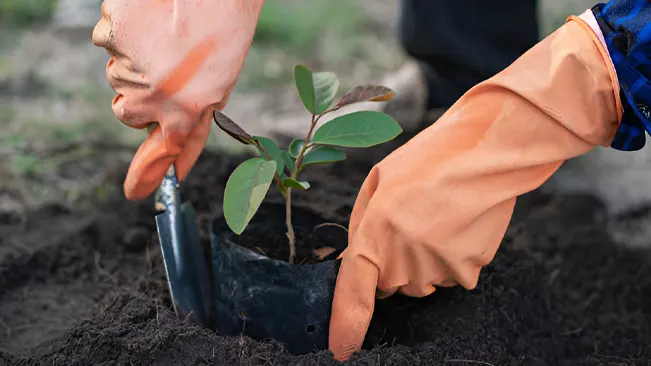
Moreover, sustainable gardening involves careful water management practices such as rainwater harvesting and drip irrigation, which ensure efficient water use. It also includes the use of organic pest management techniques that avoid the use of harmful chemicals, preserving both the health of the garden and the broader environment. By adopting sustainable practices, gardeners can create productive green spaces that are in harmony with their local environment, reducing their carbon footprint and supporting a healthier planet. Through these practices, sustainable gardening embodies a proactive stance towards environmental stewardship, offering a practical way to engage with and positively impact the natural world.
What is a Carbon Footprint?
A carbon footprint is the total amount of greenhouse gases, primarily carbon dioxide, that are emitted directly or indirectly by human activities, measured in equivalent tons of carbon dioxide (CO2e). It encompasses all the emissions produced from burning fossil fuels for electricity, heating, and transportation, as well as the production and consumption of goods, services, and food. A carbon footprint can be calculated for an individual, a family, an organization, or within larger systems like cities or countries. This measurement helps to quantify the impact of these activities on the environment, particularly in contributing to global warming and climate change.

Understanding and managing one’s carbon footprint is crucial for mitigating the effects of climate change. By identifying the major sources of emissions, individuals and organizations can implement targeted strategies to reduce their carbon output. This might include adopting renewable energy sources, increasing energy efficiency, changing travel habits, and altering consumption patterns. Governments and corporations also use carbon footprint calculations to develop policies and practices that aim to reduce greenhouse gas emissions and to engage in carbon offsetting and trading schemes, further underscoring the importance of this metric in global efforts to address climate change.
Ways to Garden Sustainably and Reduce your Carbon Footprint
Reducing your Lawn
Reducing your lawn area is a significant step towards lowering your carbon footprint. Lawns, especially those that are meticulously maintained, require frequent mowing, watering, and chemical treatments, all of which can contribute to carbon emissions. Instead of a traditional grassy lawn, consider alternatives like planting a native meadow or using ground cover plants. These plants are not only low-maintenance, as they don’t require mowing, but they also help prevent soil erosion and maintain biodiversity. For those who prefer a neat appearance, a battery-powered mulching mower is a greener choice. It cuts the grass and leaves the clippings on the lawn, where they decompose and naturally fertilize the soil, reducing the need for synthetic fertilizers.
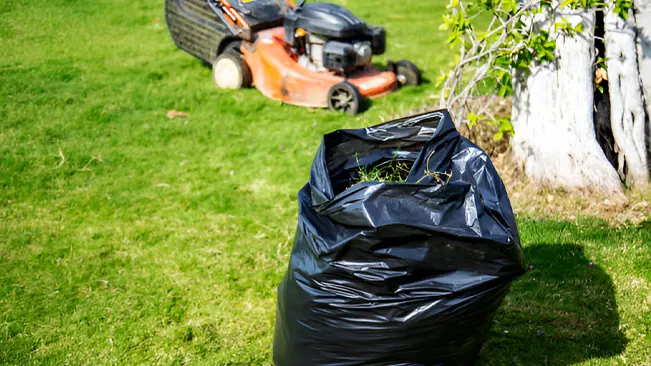
In addition to rethinking your lawn, implementing composting practices can significantly impact your garden’s carbon management. By composting grass clippings, fallen leaves, and other organic waste, you return valuable nutrients to the soil, enhancing its quality and sequestering carbon. This method not only recycles garden and kitchen waste but also locks in carbon that would otherwise be released if these materials were left to decay naturally or sent to a landfill. Moreover, integrating native plants into your garden supports local wildlife by providing essential habitats for birds, bees, and other beneficial creatures. These plants are well-suited to local conditions, reducing the need for additional water and care, and help to maintain ecological balance in your garden.
Lawn Mowing
Reducing the frequency of lawn mowing is a simple yet effective strategy for decreasing your garden’s environmental impact. Regular mowing not only consumes time but also energy, particularly if you’re using a gasoline-powered mower, which emits a significant amount of greenhouse gases. By mowing less often, you can cut down on these emissions and also save considerable effort and resources. Moreover, allowing your grass to grow slightly longer supports a more diverse ecosystem within your yard, providing habitats for beneficial insects and promoting soil health by shading the ground and retaining moisture.
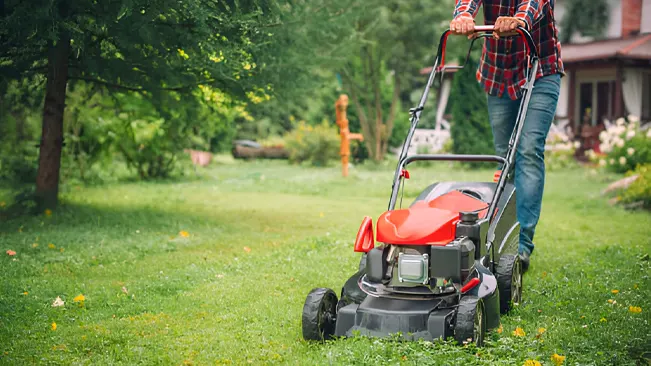
To further enhance the benefits of mowing less frequently, consider adjusting the height of your mower blades. Keeping the blades higher will let the grass grow taller, which improves its ability to photosynthesize and strengthens root development. This results in a lawn that is more drought-resistant and robust, reducing the need for supplemental watering and chemical treatments. Such practices not only help in reducing your carbon footprint but also contribute to a healthier and more sustainable garden environment.
Pruning Less
Pruning less frequently can be beneficial for both your garden’s ecosystem and its carbon footprint. While regular pruning is necessary for the health and aesthetics of plants, reducing how often and how much you prune can have positive effects. Less frequent pruning allows plants to grow more naturally, which can improve their health and resilience. This approach also benefits the local wildlife, as longer branches and fuller foliage provide better shelter and food sources for birds and insects. Additionally, if you traditionally use gas-powered tools for pruning, cutting back on their use decreases the emission of harmful pollutants, thus improving air quality and reducing your environmental impact.

Transitioning from gas-powered to battery-powered gardening tools is another impactful step toward a more sustainable gardening practice. Traditional two-cycle engines used in many garden tools have been significant polluters due to lax emissions regulations in the past, often releasing large quantities of carcinogens into the air. By switching to battery-powered equipment, you not only reduce these harmful emissions but also benefit from the quieter, safer, and more cost-effective operation of these tools. As battery technology advances, these tools are becoming an increasingly viable option for both professional landscapers and home gardeners looking to make environmentally conscious choices.
Switching to Native Plants
Switching to native plants is a strategic move for any gardener in South Florida looking to create a more sustainable and lower-maintenance garden. Native species are inherently adapted to the local climate and soil conditions, meaning they require significantly less water and fertilizer than non-native varieties. This adaptation not only reduces the need for frequent irrigation—which can be both water and energy-intensive but also lessens the garden’s overall environmental impact. Moreover, because native plants are attuned to local conditions, they are generally more resistant to pests and diseases, further reducing the need for chemical interventions.
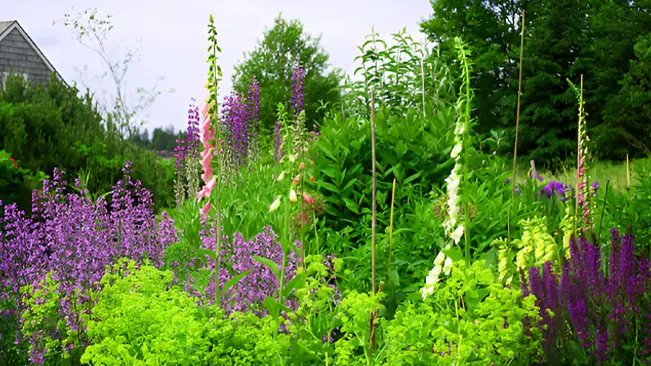
Beyond their low-maintenance appeal, native plants offer substantial environmental benefits. Non-native, “thirsty” plants often demand a lot of water and nutrients, leading to excess water consumption and potential fertilizer runoff, which can contaminate local waterways. By incorporating native flora into your garden, you help preserve the natural water balance and prevent harmful chemicals from impacting the surrounding aquatic ecosystems. This approach not only enhances the beauty and biodiversity of your garden but also contributes positively to the preservation of local habitats and the overall health of the environment.
Adding a Pond to Your Garden
Adding a pond to your garden is not only aesthetically pleasing but also environmentally beneficial. Ponds serve as vital habitats for various forms of wildlife and can significantly enhance the ecological diversity of your garden by providing a sanctuary for birds, insects, and amphibians. Furthermore, ponds can be instrumental in water conservation efforts. By collecting and storing rainwater, they reduce the need for municipal water, which is often chemically treated and costly. This stored rainwater can be used to irrigate your garden during drier periods, minimizing your water usage and reliance on external sources.

Besides its practical benefits, a garden pond contributes to a more sustainable ecosystem. It acts as a natural cooling spot for wildlife during hot weather, offering them a place to drink and relax. This not only helps the local fauna but also promotes a balanced ecosystem right in your backyard. By integrating a pond into your garden, you effectively create a micro habitat that supports biodiversity while also implementing a natural, cost-effective solution for garden watering needs. This approach not only beautifies your space but also plays a crucial role in supporting local wildlife and reducing environmental impact.
Growing Plants from Seed
Growing plants from seed is an effective and environmentally friendly method to start your garden. It not only reduces your reliance on commercially grown plants, which often come in non-recyclable plastic containers, but also significantly cuts down on the plastic waste associated with gardening. By opting to start your plants from seed, you can use biodegradable starter pots made from newspaper, recycled paper, or other sustainable materials instead of plastic. This approach not only minimizes waste but also prevents the environmental damage caused by peat extraction for peat-based pots, as peat bogs are critical and sensitive ecosystems that are increasingly threatened by industrial harvesting.
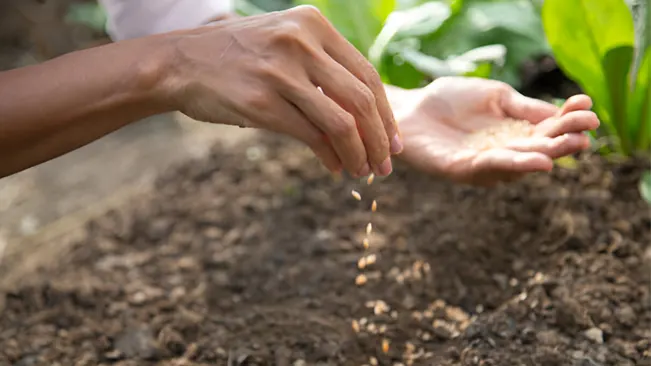
In addition to its environmental benefits, growing plants from seed can be more economical. Seeds typically cost less than pre-grown plants, offering a cost-effective way to populate your garden. Furthermore, you can enhance this benefit by harvesting seeds from your own plants at the end of the season, which allows for a self-sustaining garden year after year. This practice not only saves money but also encourages a deeper connection with the cycle of growth in your garden, fostering a greater appreciation for the processes that support plant life and sustainability.
Digging in Your Garden
Digging in your garden might seem like a basic activity, but it has a greater impact on the environment than you might expect. When soil is turned or disturbed, it releases stored carbon dioxide back into the atmosphere, contributing to greenhouse gas emissions. This happens because soil contains organic matter that, when exposed to air, decomposes more rapidly and releases carbon. To minimize this environmental impact, it’s beneficial to avoid unnecessary digging in your garden. If digging is unavoidable, scheduling this activity for the fall can be more advantageous, as cooler soil temperatures can help reduce the amount of carbon released.
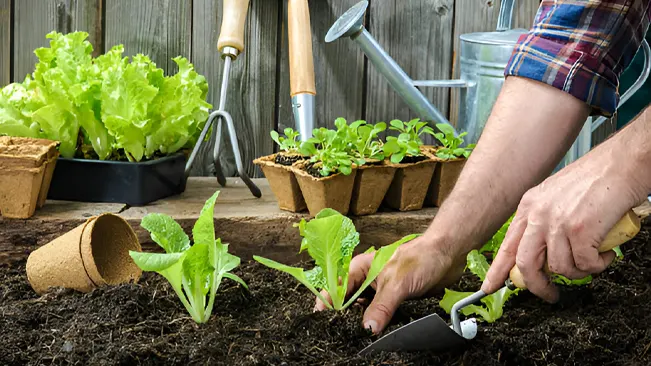
An effective strategy to further reduce soil disturbance and its associated carbon release is to adopt a no-till gardening approach. This method involves layering mulch, compost, and other organic materials on top of the soil, rather than mixing them in through digging. Utilizing cover crops can also improve soil health and fertility by fixing nitrogen and adding organic matter back to the soil when they decompose. No-till gardening not only helps keep carbon locked in the soil but also builds up soil structure and fertility over time, leading to a healthier, more productive garden without the need for intensive labor or disruption of the soil ecosystem.
Recycling and Reusing Garden Waste
Recycling and reusing garden waste is a pivotal practice for reducing your environmental impact while enhancing the health of your garden. Organic waste such as leaves, grass clippings, and tree branches, often considered trash, are actually valuable resources. Instead of discarding these materials into landfills where they contribute to methane emissions as they decompose anaerobically, you can turn them into compost or use them as mulch. Composting converts garden waste into a nutrient-rich amendment that improves soil structure, moisture retention, and fertility, thereby reducing the dependence on synthetic fertilizers. Similarly, using this waste as mulch not only suppresses weeds but also helps conserve soil moisture and adds organic matter back into the soil as it breaks down.
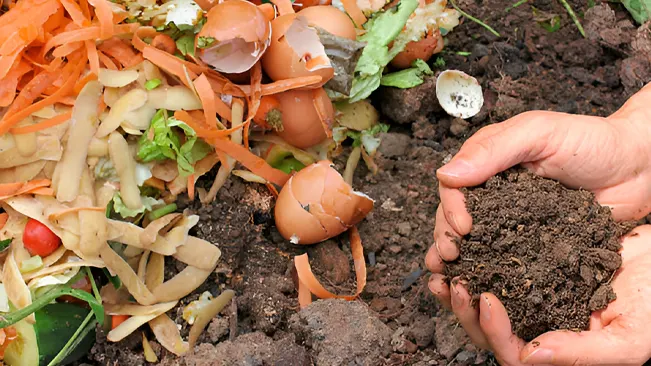
Incorporating practices like creating new garden beds from repurposed garden waste or building compost bins from old wood can further extend the life of these materials and minimize your carbon footprint. By recycling and reusing garden waste, you not only keep these materials out of the waste stream but also contribute to a circular economy where nothing goes to waste. Gardening sustainably connects us more deeply with nature and demonstrates a commitment to preserving our planet. By adopting these simple yet effective habits, gardeners can play a crucial role in fostering a more sustainable future, ensuring that our interactions with the earth are regenerative rather than depletive.
Conclusion
In conclusion, reducing our carbon footprint through sustainable gardening practices is essential for environmental health. By choosing native plants, minimizing soil disturbance, and recycling garden waste, we can significantly cut carbon emissions and enhance ecological balance. Each small step contributes to a larger global effort towards sustainability. As gardeners, we have the power to make impactful changes, helping combat climate change while nurturing our own green spaces.
FAQS
- What is a carbon footprint?
A carbon footprint is the total amount of greenhouse gases, including carbon dioxide and methane, that are generated by our actions. In gardening, this can come from the use of fossil fuel-based garden tools, synthetic fertilizers, and the transportation of garden supplies. - How can gardening help reduce my carbon footprint?
Gardening can reduce your carbon footprint by sequestering carbon in the soil, using sustainable practices like composting, selecting native plants that require less water and fertilizer, and minimizing the use of gasoline-powered equipment. - What are native plants and why are they important for reducing carbon emissions?
Native plants are species that have developed naturally in a particular region. They are important for reducing carbon emissions because they require less water, fewer chemicals, and adapt better to local soils, reducing the need for interventions that can increase carbon emissions. - Can no-till gardening really help the environment?
Yes, no-till gardening helps the environment by maintaining soil structure, enhancing water retention, reducing runoff, and keeping carbon sequestered in the soil. This method reduces the need for mechanical disturbance of the soil, which typically releases carbon dioxide. - What is the benefit of composting garden waste?
Composting garden waste turns it into a nutrient-rich soil amendment, reduces landfill use, decreases methane emissions from decomposing organic matter in landfills, and returns essential nutrients back to the earth, enhancing soil health and structure. - Is it better to use manual or electric garden tools to reduce my carbon footprint?
Electric garden tools are generally better for reducing your carbon footprint compared to gas-powered tools. They emit fewer pollutants and, if powered by renewable energy sources, can significantly lower your gardening-related emissions. - How does reducing water usage in the garden impact my carbon footprint?
Reducing water usage lowers the energy required for pumping, treating, and heating water, which is often powered by fossil fuels. Using techniques like rainwater harvesting and drip irrigation can significantly decrease water use and thus reduce your carbon footprint.

Joel Cunningham
Forestry AuthorI'm Joel Cunningham, an expert in pruning and weed management with over a decade of experience. My skills are rooted in formal training and extensive practice, focusing on advanced pruning techniques and efficient weed control. I'm known for my quality work, precision, and deep understanding of plant health and soil dynamics. My contributions extend to educational initiatives where I share sustainable practices and advice, establishing myself as a reliable and authoritative figure in the gardening community.

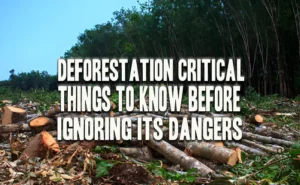


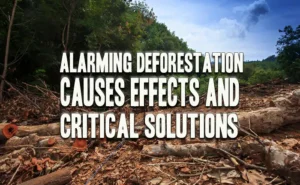
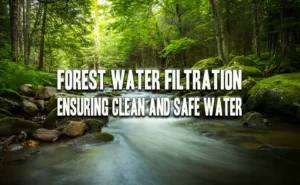
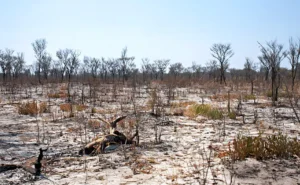
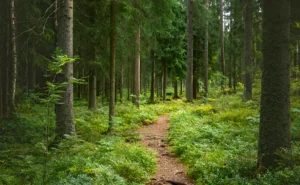
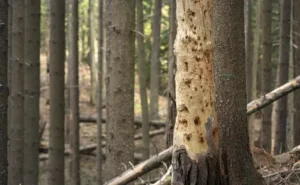
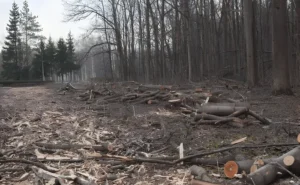



Leave your comment